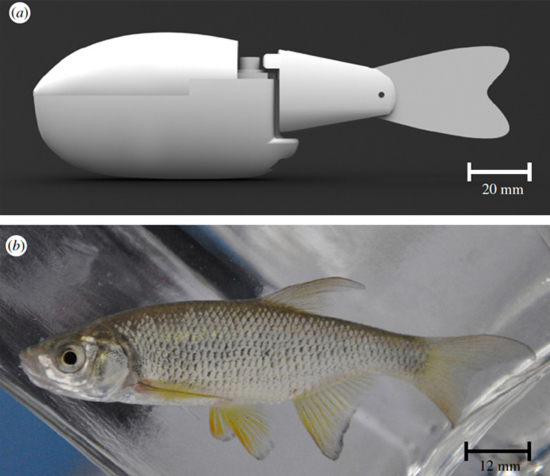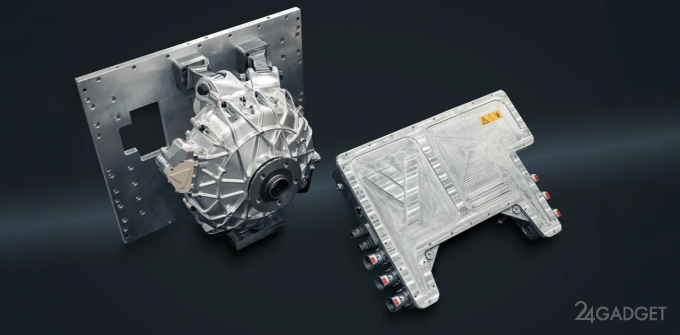They have been assimilated: real fish follow Borg fish (video)

It sounds a little creepy, evoking images of unwitting fish following a robotic swimmer just like Picard was drawn into the Borg Collective. But the experiment has a warm and fuzzy heart — to understand why and how fish operate in schools to potentially guide them away from environmental disasters or hazards in the wild.
The test involved a robot fish designed to look like a Notemigonus crysoleucas, a species of Golden shiner. A key difference in this recent research over previous studies of fish interactions with fish-like replicas was the addition of movement for the first time in the robot fish. The robot fish had the general (though larger) shape and tail movement of the Golden shiner.
The robot fish was then dropped in a water tunnel with live Golden shiner fish and intriguingly, the smaller live fish followed behind the robot's wake in streaming water. When scientists turned off the tail movement of the robot fish the live fish appeared more defensive and dropped the schooling action quickly.
So at least in the Golden shiner fish movement and a similar body shape seem to be key in getting live fish to interact normally with robot counterparts as school would in the wild.
This could lead scientists to developing ways to help fish in the wild. While schooling behavior is helpful in some ways — such as finding mates and food, protection from predators or efficiency of movement — it can be just as hazardous to them. Being confined to a group also opens the fish up to dangers from predators, disease and environmental disasters.
If scientists could insert a robot fish into a school of fish that is in jeopardy from any one of those threats, they could potentially divert a portion of the school away from disaster.
"If accepted by the animals, robotic fish may act as leaders and drive them away from human-induced ecological disasters that are affecting life in aquatic environments, such as oil spills, and man-made structures, such as dams," the authors of the study wrote.
The study was a collaboration between Stefano Marras of the University of Montpellier and Maurizio Porfiri of the Polytechnic Institute of New York University and was published online yesterday in the Journal of the Royal Society Interface.
Source: dvice




